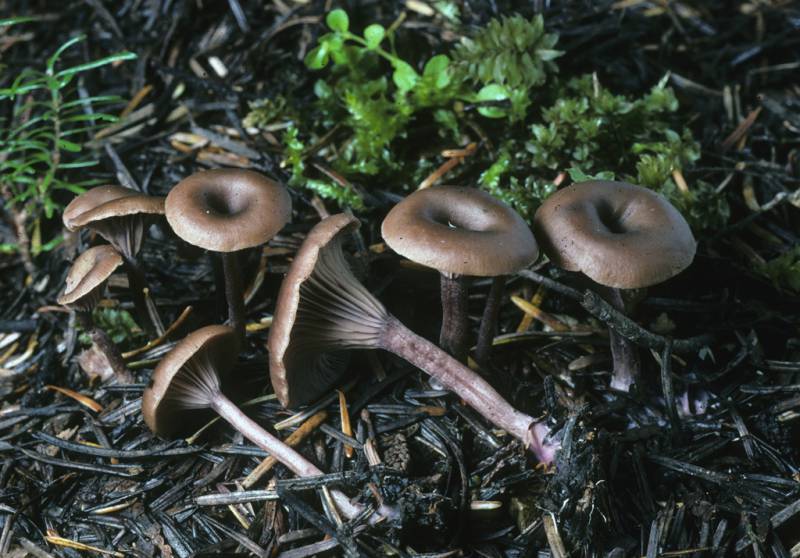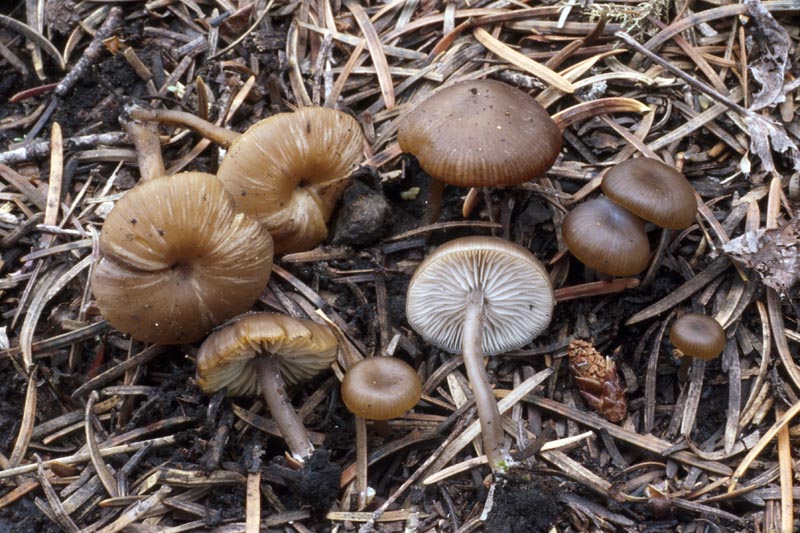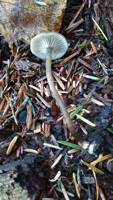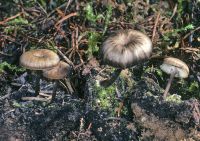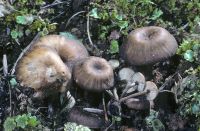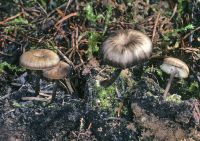Substrate: M. maura occurs on charred earth or burned wood under conifers or in fire pits, appearing from early summer late into fall.
Spores: white, smooth to roughened, and amyloid
Conservation Status: Not of concern
Myxomphalia maura (= Fayodia maura (Fries) Singer) has the aspect of an omphalina because of its small size, decurrent gills, and dark coloration. The caps have a shallowly to deeply depressed center, feel gelatinous, have distinct fine, long striations and typically are blackish brown to dark gray-brown and hygrophanous. The fruitbodies are thin-fleshed, with adnate to short decurrent, whitish to faintly grayish gills. The stipes are thin and brittle, have a viscid surface, and are colored like the caps. The spores are white, smooth to roughened, and amyloid. M. maura occurs on charred earth or burned wood under conifers or in fire pits, appearing from early summer late into fall. It often is found with Lyophyllum atratum (Fries) Singer, a small blackish brown collybia-like species.
PNW Herbaria: Specimen records of Myxomphalia maura in the Consortium of Pacific Northwest Herbaria database.
CalPhotos: Myxomphalia maura photos.

